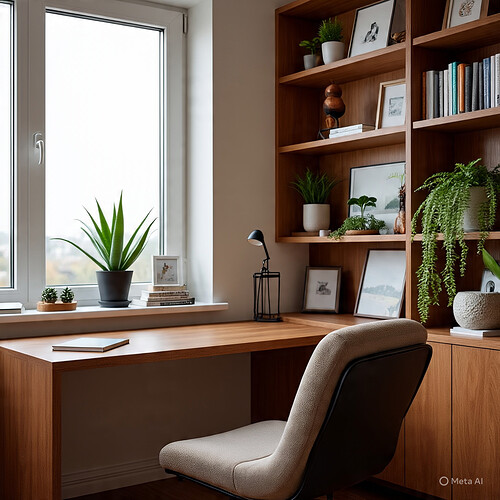Not too long ago, a home office was considered a luxury—something you might only see in large houses or reserved for people who ran businesses from home. Today, that has completely changed. With remote work, online learning, and flexible schedules becoming a normal part of life, the home office has become one of the most important spaces in modern living.
What makes home offices so appealing is their versatility. They’re not just about work—they’re spaces designed for focus, productivity, and even creativity. For some, a home office is a quiet retreat to handle professional tasks. For others, it’s a place to study, write, paint, or simply organize daily life. The rise of home offices reflects how our homes have evolved into multi-purpose environments.
Design plays a huge role in how effective a home office can be. A dedicated desk, ergonomic chair, and good lighting are the basics, but the small details make a difference too. Plants add life, shelves keep clutter under control, and personal touches—like photos or art—make the space inspiring instead of sterile. Unlike corporate offices, home offices allow for individuality; they can reflect your personality while still being functional.
Technology has also shaped the rise of home offices. With high-speed internet, video conferencing, and smart devices, it’s now easier than ever to work from home. Instead of commuting, people can accomplish just as much (and often more) from the comfort of their living room or a spare bedroom. This convenience has changed not only how we work but also how homes are designed, with many new builds including office space as a standard feature.
Another reason home offices have become popular is the desire for balance. Having a dedicated workspace helps create boundaries between professional and personal life. It allows people to step “into work mode” when needed, and then close the door to disconnect at the end of the day. This balance is key for maintaining both productivity and well-being.
Even in smaller homes, people are finding creative ways to carve out office space. A corner of the living room, a section of a hallway, or even a closet can be transformed into a functional mini-office. These small changes prove that you don’t need a massive house to have a dedicated workspace.
The popularity of home offices isn’t just a passing trend—it’s a reflection of how we live today. Work and life are no longer separated by distance, and our homes have adapted to meet those needs. A well-designed home office is more than a place to sit at a computer; it’s a symbol of flexibility, independence, and the changing way we see “home.”
